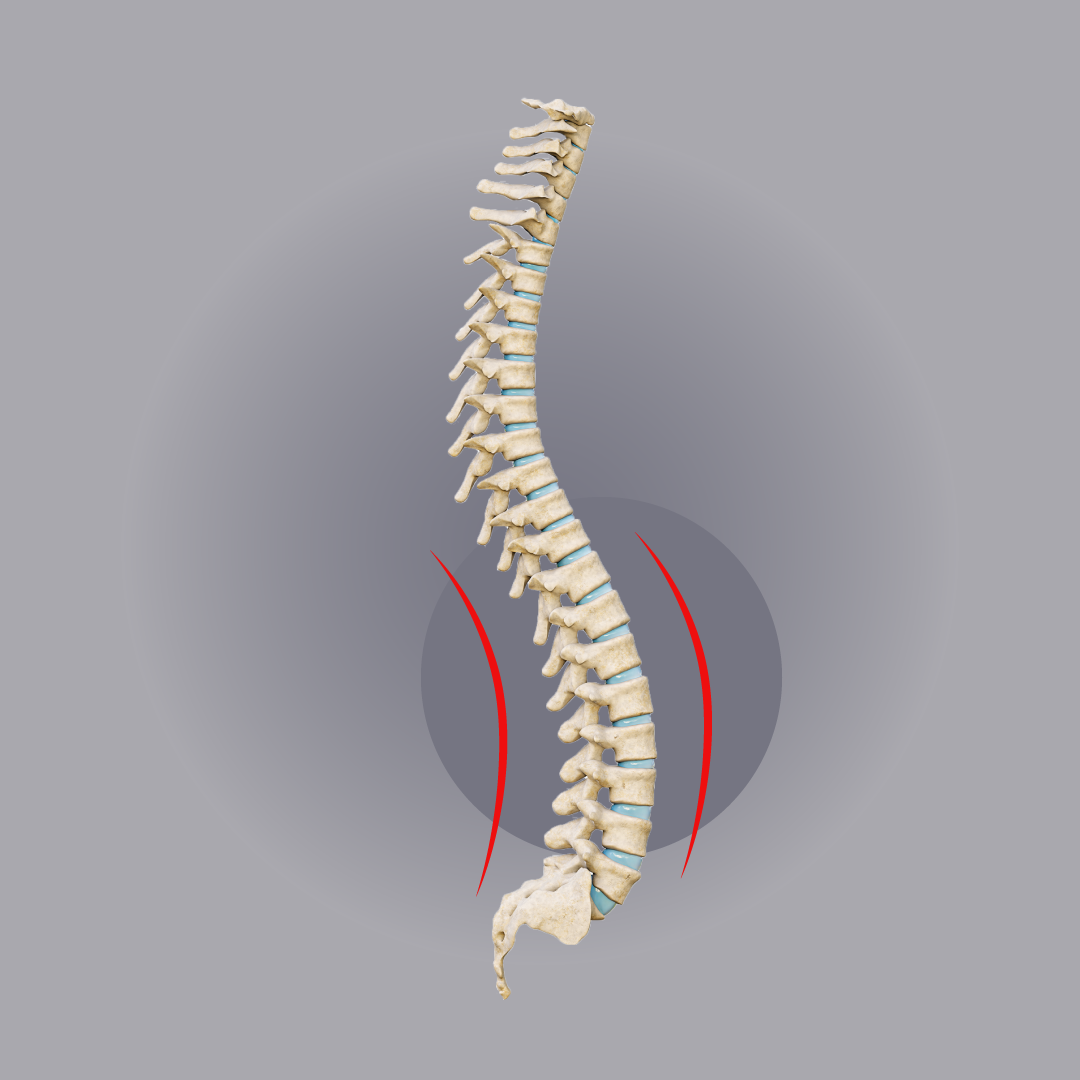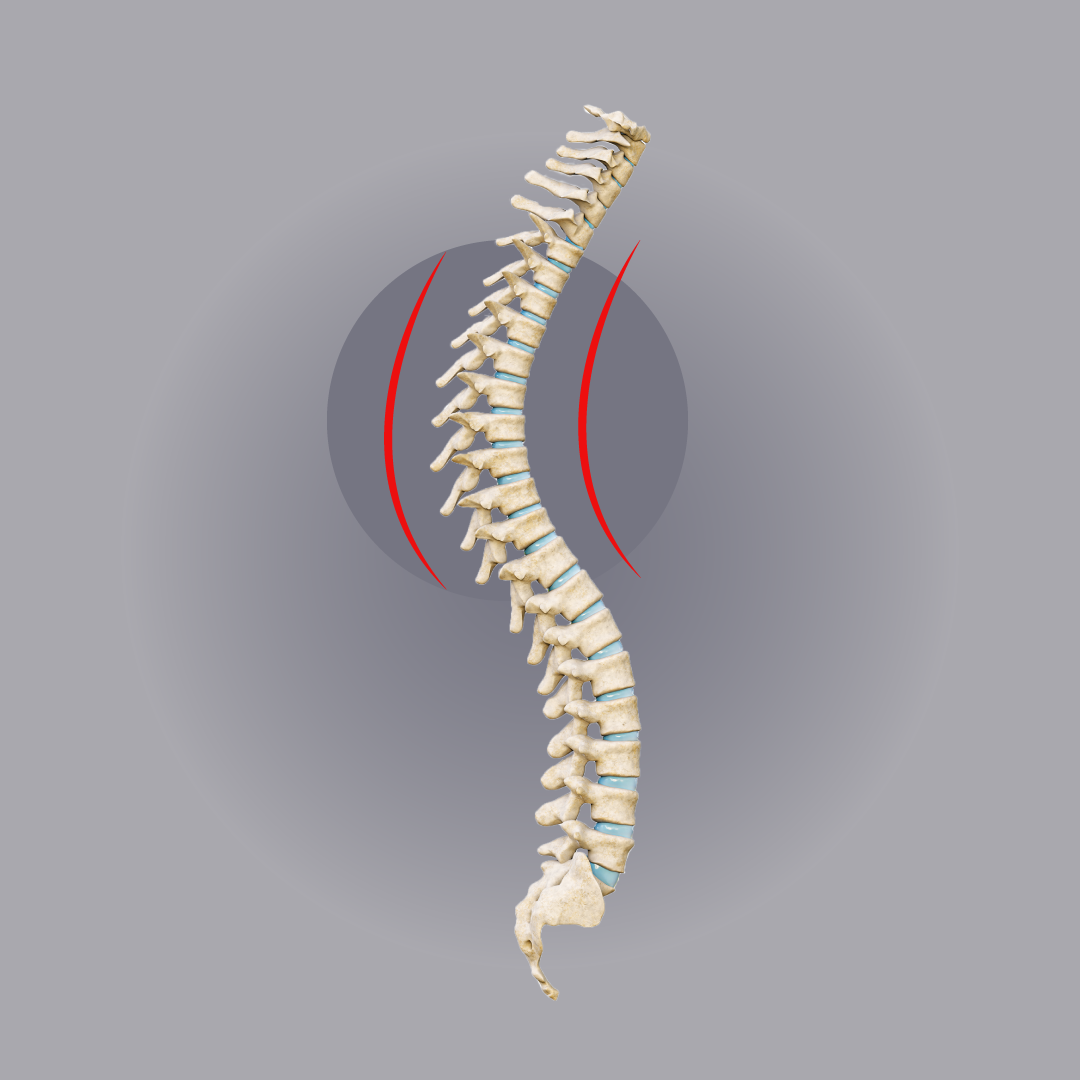
Treated conditions
Home » Areas of expertise » Sagittal Imbalance
Treated conditions
Sagittal Imbalance
Sagittal imbalance refers to an alteration in the physiological curves of lumbar lordosis and thoracic kyphosis, resulting in a pathological forward displacement of the patient’s trunk, forcing them to walk bent over. The causes are mainly degenerative in nature (spondyloarthrosis, loss of normal disc height, vertebral instability, spinal canal narrowing, paraspinal muscle atrophy, etc.), post-traumatic (vertebral fractures), or even post-surgical (following decompressions or arthrodesis), and there may be an associated scoliosis.
Symptoms
Sagittal imbalance usually manifests with:
- Persistent pain in the dorsolumbar region, back stiffness with difficulty straightening up actively, the need to walk with aids such as walkers or crutches,
- Respiratory difficulties due to compression on the lungs and airways,
- Neurological symptoms (difficulty walking, radiating leg pain, tingling, and numbness in the legs) due to the compression of spinal nerves.
Diagnosis
To accurately diagnose hyperkyphosis, certain diagnostic tests are essential:
- X-ray (or teleradiography) of the entire spine, in a lateral projection to verify the degree of sagittal imbalance.
- MRI to evaluate the condition of the soft tissues and any involvement of the spinal nerves.
- CT scan to better understand the bone morphology of the vertebral bodies.
- Bone densitometry to check for the concurrent presence of osteoporosis.
Treatment
In mild and non-progressive forms, the treatment is conservative through muscle strengthening exercises and the use of braces to improve and/or stabilize posture.
When the deformity is progressive and causes disabling symptoms that do not respond to conservative treatments, surgical intervention is necessary. This aims to realign and stabilize the correction of the deformity through arthrodesis, which involves the implantation of screws and rods.


